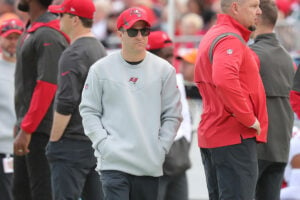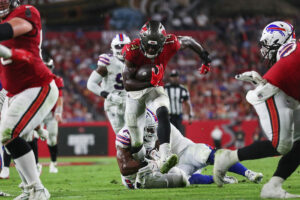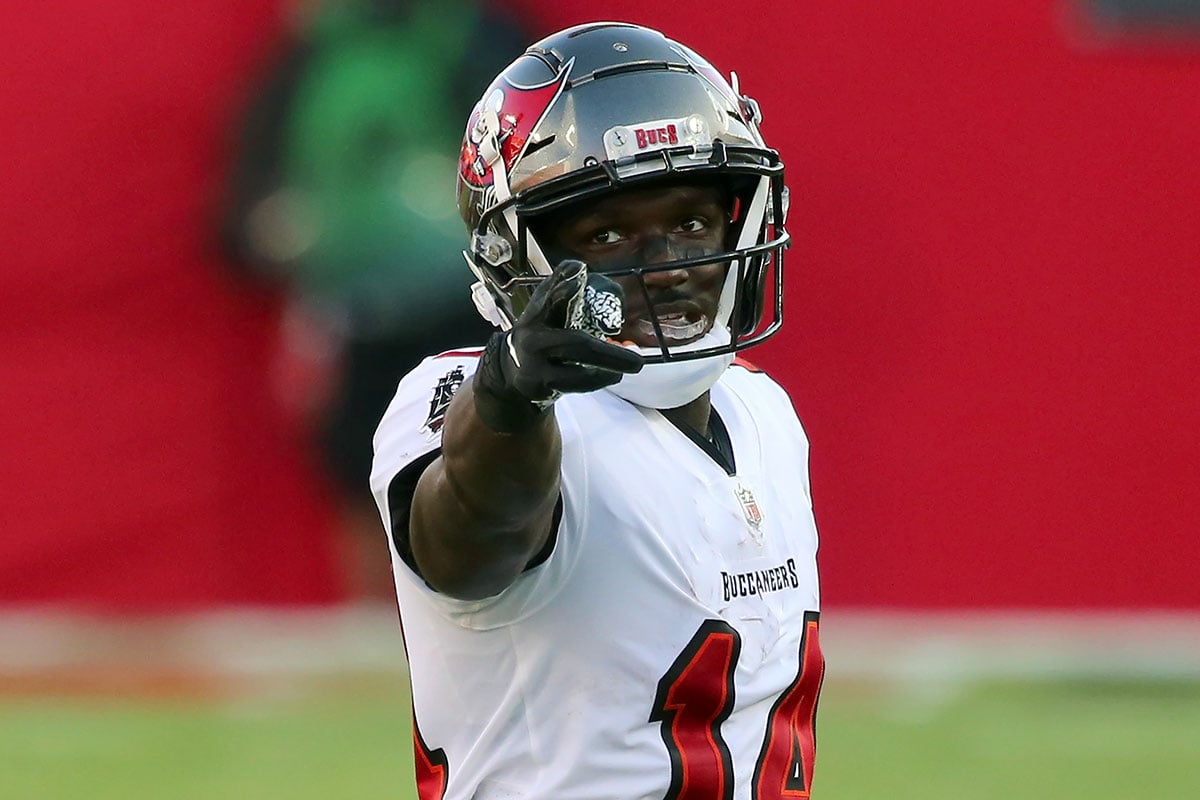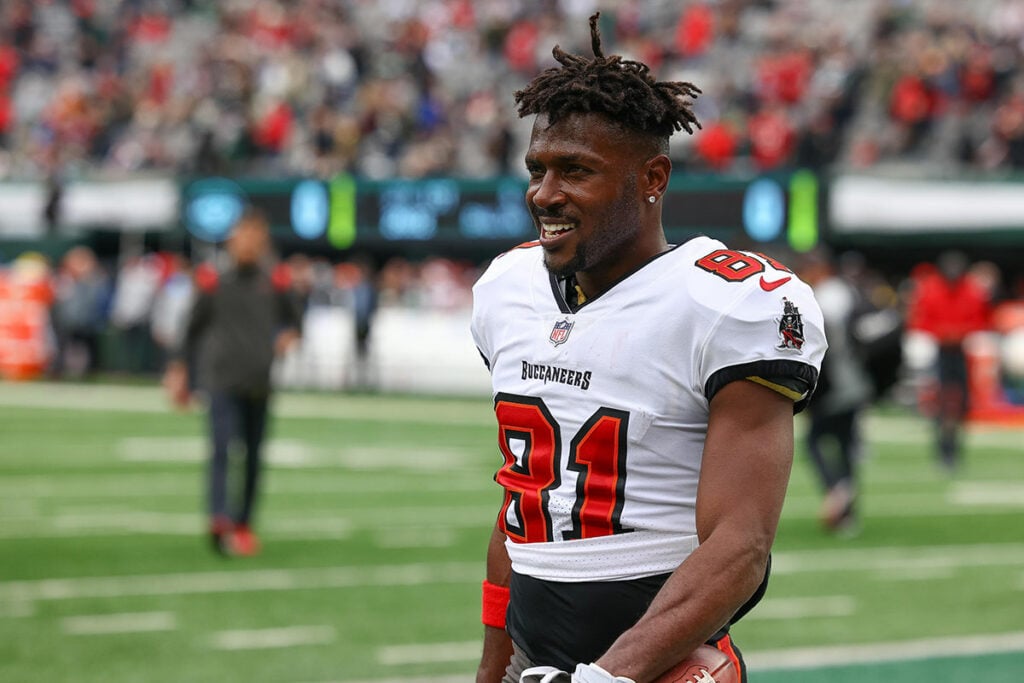Hold up. What’s with that title? What does T.J. Watt have to do with Bucs wide receiver Chris Godwin and general manager Jason Licht and vice president of football administration Mike Greenberg?
Maybe I was trying to play one of those “one of these is not like the others” games. Bucs fans (and more specifically Pewter Report readers) would quickly say that the obvious choice would be TJ Watt, as Godwin, Licht and Greenberg are members of the Tampa Bay Buccaneers.
General football fans might identify Licht and Greenberg as the odd men out, since Watt and Godwin are the only two football players. I understand the confusion. But I assure you that all three have become inextricably linked in recent months.
Examining T.J. Watt’s Contract
On September 10, T.J. Watt signed a four-year, $112 million contract extension with the Pittsburgh Steelers. The mega contract was largely expected. Watt is inarguably one of the league’s best edge rushers, and edge rusher is a premium position that generates some of the largest contracts in the NFL. The deal had reportedly been in the works all offseason. And yet, it did not get finalized until just a few days prior to the Steelers’ first game of the season.
Despite a presumably great relationship between Watt and the Steelers organization, the understanding that the average annual value (AAV) on the contract would be north of $25 million, as well as the precedent that players of Watt’s caliber get locked up to long-term contracts before having the opportunity to test free agency, the deal took a long time to come together. By most reporting, the hold-up was one of great importance to the Bucs front office and their budding superstar wide receiver. According to Steelers Depot, Watt and his representation were not satisfied with the number of years in the deal with guaranteed salaries.
In the NFL, contracts are often reported for their maximum potential value. But the important numbers for teams and players is the guaranteed value. This is of special concern to a Bucs front office that has created one of the NFL’s best rosters by structuring contracts with very little guaranteed money past year two of the contract. Here are some examples of post-rookie contracts the Bucs have signed players to in the Licht era. Note the max years/value, signing bonus, and number of guaranteed years for each:

Clearly, the maximum value of these contracts was significant in length and value. But if the player was underperforming, he could be cut (and many were) early in the contract with little-to-no penalty to the team’s salary cap. This allowed the team to move on from one high-priced, disappointing player early, signing or extending better players instead.
The Bucs’ strategy, combined with elite draft success over the past four years, led to a roster that could support the substantial contracts of a premier quarterback, two wide receivers, a tight end, three offensive linemen, two edge rushers, a defensive lineman and a linebacker. If those previous contracts had larger signing bonuses or more guaranteed years, moving on from those players would have resulted in significant dead cap. Such a disaster might have prevented the Bucs from maxing out their Super Bowl window.
Bucs & Godwin Must Agree On Guarantees

Bucs VP of football administration – Photo by: Cliff Welch/PR
This all comes back to Licht, Greenberg and Godwin. As fans of the Bucs, this strategy of limiting risk in contracts is preferable. It offers substantial flexibility for a team to move on from their contractual mistakes and maximize its potential roster. There is no question that Greenberg and his team have excelled in this area. He’s been the architect of this effective contract management since before Jason Licht took over as GM in 2014.
However, Godwin’s best interests are served by maximizing his guarantees in both signing bonus and guaranteed years. And this is where the Watt contract comes into play. The Steelers organization, much like the Bucs, have long been loathe to guarantee salaries past year two in contracts. However, with Watt they acquiesced. And that bodes well for Godwin, who is now looking for a new contract. The Pro Bowl wide receiver played last season on the franchise tag.
Organizations will typically bend, break or blow up their modus operandi in two situations. First, if they are dealing with an elite talent. Second, when trying to extend their playoff/Super Bowl window. Some say Godwin doesn’t quite fall into the first category. But I would argue the Bucs organization feels that he does, especially considering the role he plays.

Bucs WR Chris Godwin – Photo by: Cliff Welch/PR
In Bruce Arians’ offense, the slot receiver is a lynchpin in both the passing and running game. It requires a unique blend of traits and abilities. Godwin has the size to be a matchup problem for traditionally smaller slot corners, and to help block linebackers in the run-game. In addition, it demands the ability to run the full route tree and be sure-handed in tight quarters. Lastly, Godwin’s post-catch skill set sets him apart, especially compared to other Bucs receivers. Godwin is one of a very few receivers in the league who has all these traits.
Applying additional pressure to Licht and Greenberg is the fact that the Bucs could still be in their Super Bowl window next year. The Bucs’ front office showed signs of bending his contract structure rules this past offseason. To retain major free agents from the 2020 season, the Bucs gave large signing bonuses or void years to Lavonte David, Tom Brady, Shaq Barrett, Rob Gronkowski, and Ndamukong Suh. All these moves either guarantee or potentially create dead cap space in the future.
It will continue this offseason. Godwin’s leverage with the Bucs is looking increasingly like that of … Watt’s leverage with the Steelers last year. Of course, the good news is Godwin doesn’t carry the same “bust” potential as Michael Johnson or Anthony Collins. As a result, the Bucs might not mind tying significant cap to him for an extended period of time.
Josh Queipo joined the Pewter Report team in 2022, specializing in salary cap analysis and film study. In addition to his official role with the website and podcast, he has an unofficial role as the Pewter Report team’s beaming light of positivity and jokes. A staunch proponent of the forward pass, he is a father to two amazing children and loves sushi, brisket, steak and bacon, though the order changes depending on the day. He graduated from the University of South Florida in 2008 with a degree in finance.




